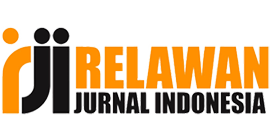Navigating the Hybrid Workforce: Challenges and Strategies in Modern HR Management
DOI:
https://doi.org/10.31539/costing.v7i3.9687Abstract
This study explores the complexities surrounding the management of a hybrid workforce in contemporary organizations, with a specific focus on PT. Darmasindo Intikaret. The research investigates the relationships between workforce productivity, employee satisfaction, organizational adaptation, and the adoption of hybrid work arrangements. Through a comprehensive analysis utilizing path analysis techniques, the study reveals significant direct and indirect effects among these variables. Findings highlight the pivotal role of organizational adaptability as a mediator, facilitating the successful implementation of hybrid work practices. The research underscores the importance of fostering organizational adaptability and prioritizing initiatives to enhance workforce productivity and employee satisfaction to navigate the challenges and opportunities presented by the hybrid workforce paradigm effectively. By embracing these insights, organizations can position themselves for success in an increasingly dynamic and evolving work environment.
References
[2] V. Čirčová and J. Blštáková, “Building Competence of Managers for Companies in Digital Transformation,” Ekon. rozhľady – Econ. Rev., vol. 52, no. 1, pp. 48–66, 2023, doi: 10.53465/er.2644-7185.2023.1.48-66.
[3] J. Tabor-Błażewicz, “The challenges of HR departments in hybrid work conditions,” Sci. Pap. Silesian Univ. Technol. Organ. Manag. Ser., vol. 2022, no. 162, pp. 691–701, 2022, doi: 10.29119/1641-3466.2022.162.38.
[4] M. Nadeem, “Vaccinated: Marketing Workforce Hybridization,” Br. J. Mark. Stud., vol. 10, no. 3, pp. 14–24, 2022, doi: 10.37745/bjms.2013/vo10.n3pp1424.
[5] Z. Wang et al., “Co-Designing for a Hybrid Workplace Experience in Software Development,” IEEE Softw., vol. 40, no. 2, pp. 50–59, 2023, doi: 10.1109/MS.2022.3229894.
[6] S. Basnet, “Artificial Intelligence and Machine Learning in Human Resource Management: Prospect and Future Trends,” Int. J. Res. Publ. Rev., vol. 5, no. 1, pp. 281–287, 2024, doi: 10.55248/gengpi.5.0124.0107.
[7] A. R. Hibrida and Sunarni, “The Future of Work: Navigating the Challenges and Opportunities of Automation, Gig Economy, and Skills Evolution in a Post-Pandemic World,” West Sci. Interdiscip. Stud., vol. 1, no. 08, pp. 638–647, 2023, doi: 10.58812/wsis.v1i08.186.
[8] F. T. Uy, C. F. K. Abendan, and M. J. F. Pernites, “Adapting HRM Practices to Globalization : Strategies for Success in a Borderless Economy,” Int. Multidiscip. J. Res. Res. Innov. Sustain. Excell., vol. 1, no. 3, pp. 142–149, 2024.
[9] U. O’Connor, F. Hasson, C. McKeever, and J. Finlay, “It is changed beyond all recognition: exploring the evolving habitus of assistants in special schools,” J. Res. Spec. Educ. Needs, vol. 21, no. 2, pp. 146–155, 2021, doi: 10.1111/1471-3802.12506.
[10] R. Deepa, S. Sekar, A. Malik, J. Kumar, and R. Attri, “Impact of AI-focussed technologies on social and technical competencies for HR managers – A systematic review and research agenda,” Technol. Forecast. Soc. Change, vol. 202, no. March, p. 123301, 2024, doi: 10.1016/j.techfore.2024.123301.
[11] M. L. Charpignon et al., “Navigating the new normal: Examining coattendance in a hybrid work environment,” Proc. Natl. Acad. Sci. U. S. A., vol. 120, no. 51, pp. 1–3, 2023, doi: 10.1073/pnas.2310431120.
[12] M. Slatvinskyi and S. Tsymbal-Slatvinska, “Hr Policy of the Higher Education Institutions in Crisis Challenges,” Econ. Horizons, vol. 9273, no. 4(26), pp. 19–26, 2023, doi: 10.31499/2616-5236.4(26).2023.291784.
[13] K. Ragazou, “Business Strategies in HR in Times of Crisis: The Case of Agri-Food Industry in Central Greece,” Businesses, vol. 1, no. 1, pp. 36–50, 2021, doi: 10.3390/businesses1010004.
[14] M. Carr and S. Jooss, “Navigating management control change: pathways to the future of work,” Accounting, Audit. Account. J., vol. 36, no. 9, pp. 390–417, 2023, doi: 10.1108/AAAJ-08-2022-6005.
[15] Binaebi Gloria Bello, Sunday Tubokirifuruar Tula, Ganiyu Bolawale Omotoye, Azeez Jason Kess-Momoh, and Andrew Ifesinachi Daraojimba, “Work-life balance and its impact in modern organizations: An HR review,” World J. Adv. Res. Rev., vol. 21, no. 1, pp. 1162–1173, 2024, doi: 10.30574/wjarr.2024.21.1.0106.
[16] D. Wheatley, M. R. Broome, T. Dobbins, B. Hopkins, and O. Powell, “Navigating Choppy Water: Flexibility Ripple Effects in the COVID-19 Pandemic and the Future of Remote and Hybrid Working,” Work. Employ. Soc., 2023, doi: 10.1177/09500170231195230.
[17] Latifat Omolara Ayanponle, Kehinde Feranmi Awonuga, Onyeka Franca Asuzu, Rosita Ebere Daraojimba, Oluwafunmi Adijat Elufioye, and Obinna Donald Daraojimba, “A review of innovative HR strategies in enhancing workforce efficiency in the US,” Int. J. Sci. Res. Arch., vol. 11, no. 1, pp. 817–827, 2024, doi: 10.30574/ijsra.2024.11.1.0152.
[18] R. Eckerholm, “Navigating New Norms The Transformation of Leadership in Hybrid Work Setting,” malmo Univ., 2023.
[19] Zainab Efe Egieya, Sarah Kuzankah Ewuga, Abimbola Oluwatoyin Adegbite, and Timothy Tolulope Oke, “the Role of Virtual and Augmented Reality in Modern Marketing: a Critical Review,” Comput. Sci. IT Res. J., vol. 4, no. 3, pp. 244–272, 2023, doi: 10.51594/csitrj.v4i3.660.
[20] S. Khan, “Evaluating the Impact of eWOM Adoption on Consumer Purchasing Intentions,” Int. J. Soc. Sci. Entrep., vol. 3, no. 1, pp. 2790–7724, 2023.


